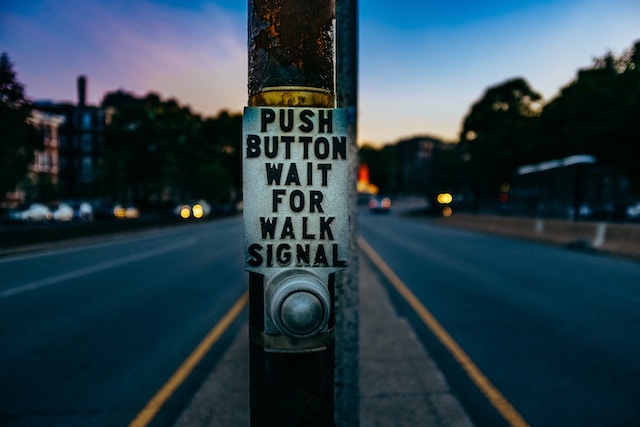Lead generation is the process of generating interest in your product or service to persuade individual leads to make a purchase.
There are many ways to generate leads, but picking the methods that will best fit your demands with the continuous development of new online strategies is important.
The process of collecting and converting strangers and prospects is known as lead generation. It refers to those who have expressed an interest in learning more about products or services.
We need to be inventive while marketing and selling to B2C (business-to-consumer) or B2B (business-to-business) customers. It is a marketing technique that involves introducing potential consumers to your company and bringing them along the path to making a purchase. Sales lead generators include job applications, blog postings, discounts, virtual events, and internet content.
The fundamental phases of the lead-generating process are simple. One of your marketing channels, such as your website, blog, or social media page, is where a visitor to your website first learns about your organization. The same visitor then clicks on your call to action (CTA), which may be an image, an interactive campaign, a button, or a message encouraging them to act.

Table of contents
The Steps for an Effective Lead Generation
Lead generation may be done in a variety of ways. The goal is to concentrate on a few tactics that have been proven to be effective for your business, and a company can never know if a method will work for its objectives until it is subjected to continual effort and time.
As a visitor becomes a client, they go through a lifecycle, and leads are a part of that.
Leads are not all made equal (nor are they qualified the same). There are several sorts of leads depending on qualified and where they are in the sales cycle. The shift from a stranger to a customer is considerably more natural when a stranger starts a discussion with you by expressing genuine interest in your business.
The second step of the inbound marketing strategy is lead creation. It happens after you have drawn a huge crowd and are ready to turn them into sales leads for your sales staff. Lead generation entails introducing potential clients to your business and nurturing them throughout sales. We separated the approach into two categories to make it simpler to understand:
- Inbound marketing
- Outbound marketing
Inbound Marketing

“Inbound marketing” is a type of marketing focusing on recruiting customers. It mixes content marketing, social media marketing, and search engine optimization to attract people to products and services.
This form of lead generation marketing revolves around a single concept, allowing your leads to find you rather than you finding them. Let us say you get an unexpected email from a company that sells home goods. Your initial response would be, “Why am I even receiving this email?”
You might spend your time browsing the web, watching advertisements, or attending webinars instead of travelling all the way to the vendor. Inbound marketing has the advantage of keeping your material out of the way of your customers.
Rather than sponsored advertising, your ad content is placed where your customers are browsing. Inbound marketing aims to attract customers by giving them valuable, interesting, and relevant information across various channels.
Content
Your content is your company’s voice. Create new material that will inspire, engage, and amuse your audience. Your material should anticipate and respond to the questions that your viewers may have. Great content is the best way to warm up your leads because buyers are becoming more self-directed.
Blogs
A well-written blog will increase site traffic and is one of the most cost-effective ways to market your products. Include calls to action for your readers, urging them to subscribe to your blog and follow you on social media.
Get creative with your blog since it is where you can best communicate your company’s voice. B2B marketers that write blogs get 67 per cent more monthly leads than those who do not, according to Social Media B2B research.
Downloadable Content
Make eBooks, manuals, and other digital materials for your products and services. You can go into great depth about your products and services in this section. Make it engaging and instructive to attract more people to look at it.
Website
On your website, the bulk of lead conversions takes place. Make sure you have calls-to-action in place to encourage users to sign up for newsletters, events, and webinars. This is where you should spend most of your time and work, especially in design and layout.
SEO
The production of quality information, like blogs, downloadable manuals, and webpages, is important for inbound lead generation. It is just as important to get people to view your material since it is meaningless if no one sees it. Increase the visibility of your website by providing the correct keywords and high-quality links to search engines so that the users may find the content fast in an organic search.
Social Media
It is crucial to market your business on social media. Buyers have already started looking at your products through social media. To acquire audience trust, you must provide relevant and interesting content for your brand.
Service Qualified Lead
Contacts or consumers who have indicated an interest in becoming a paying client to your service personnel are known as service-qualified leads. A service-qualified lead is a customer that informs their customer service representative that they wish to upgrade their product subscription; at this point, the customer service agent will up-level this customer to the appropriate sales team or representative.
How Do You Qualify Your Leads?
When qualifying your leads, keep the following in mind:
- Is your lead a good fit for the demographic you are looking for?
By looking at their demographics, job titles, firm sizes, and annual income, you can decide if your leads are suitable for buying from you. - Is your prospect enthusiastic about your product?
Showing continuous actions with your business is another indicator of a solid lead. Examine the actions of your leads on your website. You may learn a lot about what goods your leads are interested in by filling out forms, enrolling for webinars and events, and downloading material. Some lead behaviours, such as requesting a demo, utilizing your coupon code, or looking at your price page, indicate that these leads are even hotter and more likely to buy from you.
Use Lead Scoring
The easiest approach to assess a lead’s willingness to buy is to use lead scoring. The following stage is to nurture and grade your leads after they’ve been produced and analyzed. Sales and marketing collaborate to determine a threshold score at which they should forward a lead to sales.
Lead generation mechanics
While you may have learned the most effective marketing strategies for generating leads, this perfect lead-generation procedure has always played a significant role in attracting prospects. In this part, we will look at the mechanisms that make inbound marketing the best lead-generating system.
Customers are constantly on the hunt for good offers. Send them membership renewal offers, free trials, downloadable material, discounts, and notices of upcoming sales. These offers may be displayed on your blogs, websites, social media pages, emails, and even direct mail.
The main parts of your offer are the calls to action or CTA that should be prominently presented in your material. Your leads will end up on your landing page to redeem your offer. This page should have a clear and concise purpose. Lead generators may use this everywhere on your site, but it’s most effective on the landing page. This is where your leads will fill out their contact information to take advantage of your offer. Your firm will follow up with your leads using the information they share with you to get your offers, completing the lead generating process.
Before starting a lead generation campaign, think about a few things that will help you get more quality leads. Create your website to generate leads in mind. Of course, the leads you seek will determine the appearance of your website. The most important thing is to pay attention to how your website is set up in this instance. When creating it, put yourself in the shoes of your ideal lead.
Customize your CRM to your specific industry specialty to increase its efficacy. You can acquire and retain all of the most critical information more simpler when you customize your CRM for your specific organization than you can with a generic CRM setup.
Giving your target audience useful information is a wonderful approach to gaining their trust. Trust is the most important asset for your leads, so make sure your content focuses on gaining as much of it as possible.

Sheikh Adil is a keynote speaker on social media strategy, LinkedIn marketing & social media marketing trainer, MediaHicon digital marketing author, and MediaHicon SEO consultant for global organizations.

